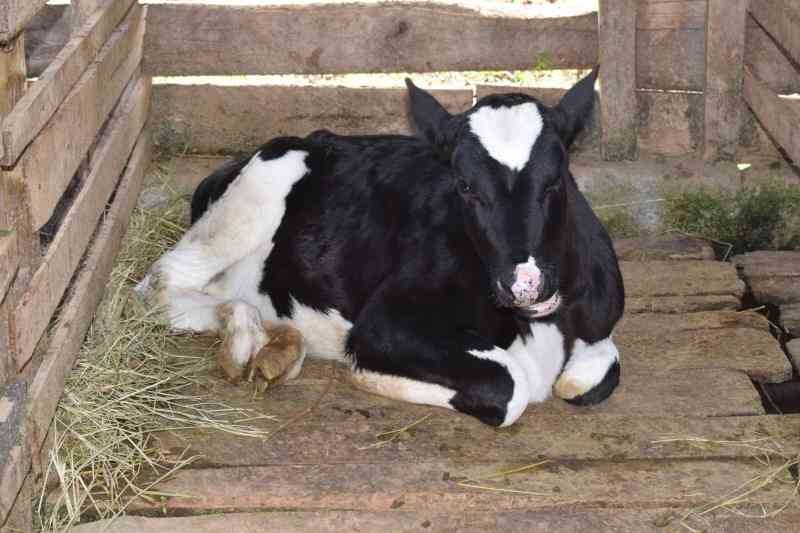 |
|
Gaudencia Juma Ndede on her farm in Got Osiri village in Siaya County where she plants different types of crops. She is also a full-time fashion design tutor at Rera Youth Polytechnic. [PHOTO: COLLINS ODUOR/STANDARD] |
Gaudensia Juma’s two-acre parcel in Got Osiri village in Siaya County has never been without crops since 2009.
Even though she is a full-time tutor at Rera Youth Polytechnic, she insists she is also a full-time farmer given that she has to spend any little time out of the institution on her farm.
With her salary falling way below her family’s needs, Ms Juma has found solace in farming which has now become her main source of livelihood.
Her day starts at 5am on weekdays, where she gets to the farm with her son and works till 6.30am. She then goes back home to freshen up before reporting to work where she teaches fashion design.
She, however, leaves her son behind to proceed with the work.
In the evening, Ms Juma changes to her work clothes and heads to the farm where she stays until dusk, just to ensure it is safe from weeds, thieves and pests.
“One and a half hours is a lot of time in the farm if you plan properly and I have experienced it for the last few years I have been practicing it,” she said.
She has adopted the ‘Gender and Family Focus’ which has enabled her utilise her children to keep the farm productive.
She harvests every month, with different crops maturing at different times of the year. This has made the farm her main source of income.
To maximise the use of the land, she has sub-divided it into small pieces of between 10 feet by 15 feet, to 15 feet by 20 feet.
Biggest chunk
With maize taking the biggest chunk of the of the land at approximately one acre; kales, tomatoes and potatoes also alternate their positions in a well-programmed crop rotation schedule in the other half.
She grows fruits and fodder on the edge of the farm. The area has unpredictable rainfall, a situation which has made many residents to shy away from farming. But for Ms Juma, this was an opportunity for her to exercise her knowledge in irrigation in order to get better produce.
With five dairy goats and over 20 layers, Ms Juma has utilised the mutual independence between crops and animals to avoid spending much money on fertiliser and feeds.
“The fodder plus the leaves of crops I plant here are enough to feed my goats while the goats and chicken droppings have been adequately supplementing manure I use in the farm. I have been able to feed my family and have some extra coins for other needs,” she said.
Stay informed. Subscribe to our newsletter
Ms Juma started farming in 2008 when Kenya Agricultural Research Institute (Kari) landed in the area and inquired to support villagers in planting trees to fight climate change.
She was proposed by villagers as an active member of the clan and was picked to mobilise other farmers who would be used in the project.
“Very few people embraced planting trees because its returns were not immediate and Kari started introducing people to crops as they also promoted the planting of trees,” she said.
Ms Juma’s two-acre land which lay idle became a learning site for farmers as she embraced the idea and started exploiting Kari’s leniency. She planted cereals, vegetables, tubers and fruits which are currently paying off with the family biding bye to buying foodstuffs.
Through subsequent training by the Ministry of Agriculture’s Njaa Marufuku Initiative, Kenya Water for Health Organisation and Kari, Ms Juma has brought in more farmers to benefit from the goodies. She is currently working on acquiring another parcel of land to introduce large-scale mango production.
 The Standard Group Plc is a
multi-media organization with investments in media platforms spanning newspaper
print operations, television, radio broadcasting, digital and online services. The
Standard Group is recognized as a leading multi-media house in Kenya with a key
influence in matters of national and international interest.
The Standard Group Plc is a
multi-media organization with investments in media platforms spanning newspaper
print operations, television, radio broadcasting, digital and online services. The
Standard Group is recognized as a leading multi-media house in Kenya with a key
influence in matters of national and international interest.
 The Standard Group Plc is a
multi-media organization with investments in media platforms spanning newspaper
print operations, television, radio broadcasting, digital and online services. The
Standard Group is recognized as a leading multi-media house in Kenya with a key
influence in matters of national and international interest.
The Standard Group Plc is a
multi-media organization with investments in media platforms spanning newspaper
print operations, television, radio broadcasting, digital and online services. The
Standard Group is recognized as a leading multi-media house in Kenya with a key
influence in matters of national and international interest.








